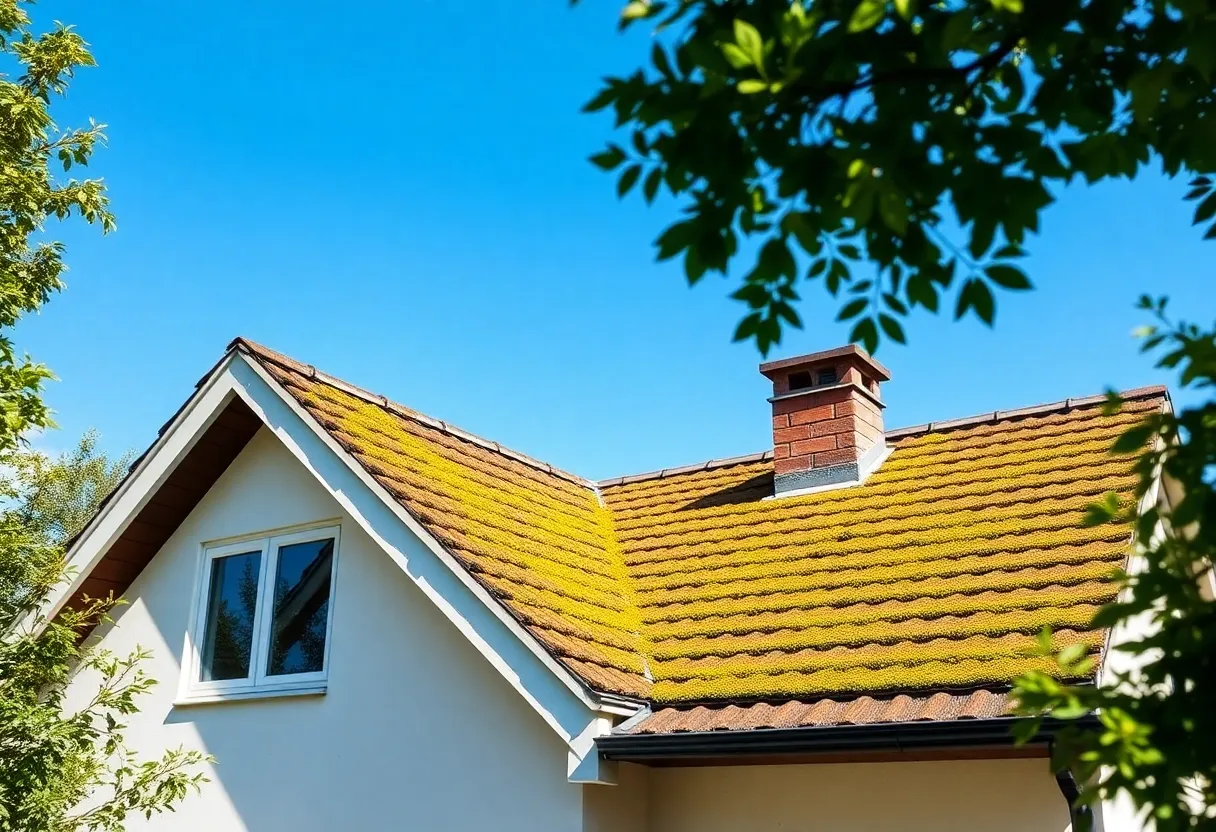How to Safely Remove Roof Moss and Algae: A Step-by-Step Guide for Homeowners
Roof moss and algae are common issues that can lead to structural damage and aesthetic concerns for homeowners. Addressing this problem effectively requires a strategic approach to ensure safety and long-term roof health. This guide provides a detailed, step-by-step process for removing roof moss and algae safely and efficiently.
Understanding Roof Moss and Algae
Moss and algae can accumulate on roofs, particularly in shady or damp conditions. Moss often appears as a soft, green layer, while algae may manifest as dark streaks. Both organisms trap moisture, which can lead to shingles deterioration and even leaks.
Causes of Moss and Algae Growth
- Shady Areas: Trees obstruct sunlight, creating an environment conducive to growth.
- Moisture: High humidity or poor drainage can foster algae and moss.
- Poor Ventilation: Inadequate attic ventilation results in excess humidity.
Preparation for Removal
Before starting the removal process, effective preparation is crucial. Gathering the right tools and materials will help streamline the task.
Essential Tools and Materials
- Roof Safety Gear: Harness, non-slip shoes, and helmets for safety.
- Ladder: A sturdy, stable ladder to reach your roof.
- Brushes and Scrapers: A soft-bristle brush for gentle scraping.
- Cleaning Solutions: Bleach or specially formulated roof cleaners.
- Garden Sprayer or Hose: For rinsing and applying cleaning solutions.
Safety Precautions
Safety should always be the primary concern when working on roofs. Ensure proper ladder placement and stability. Always wear a harness if working on steep roofs. Working with a buddy can also provide another level of safety.
Step-by-Step Removal Process
Step 1: Assessment
Inspect your roof for areas most affected by moss and algae. Identify the type of shingles in use, as some may require gentler cleaning methods.
Step 2: Preparing the Roof Surface
Clear loose debris, such as leaves and branches, from the roof surface. This helps you see the affected areas clearly and prevents further buildup during treatment.
Step 3: Applying Cleaning Solutions
Select a cleaning solution suitable for your roofing material. If using bleach, dilute it with water (1 part bleach to 3 parts water). For a commercial roof cleaner, follow the manufacturer’s recommendations. Even a homemade solution of vinegar and water can be effective.
Application Tips
- Use a garden sprayer to apply the solution evenly.
- Start from the highest point and work downwards.
- Allow the solution to sit for at least 15 minutes for maximum efficacy.
Step 4: Scrubbing
Once the solution has had time to penetrate, utilize a soft-bristle brush to scrub away the moss and algae. Avoid using metal brushes as they can damage the shingles.
Step 5: Rinsing
After scrubbing, rinse the roof thoroughly with a garden hose, starting from the top and working down. Ensure all cleaning solution residues are washed away to prevent any chemical damage to the roof.
Step 6: Final Inspection
After the roof has dried, conduct a final inspection. Look for any remaining patches of moss or algae, and repeat the cleaning process if necessary.
Post-Removal Maintenance
Regular maintenance plays a vital role in preventing the recurrence of moss and algae. Implementing the following practices can significantly reduce future growth:
Routine Inspections
Conduct regular roof inspections, particularly in the spring and fall. Identify problem areas early to address them before significant buildup occurs.
Trimming Vegetation
Keep trees trimmed to maximize sunlight on the roof. This reduces moisture retention and fosters a less hospitable environment for moss and algae.
Improving Ventilation
Ensure proper ventilation in the attic space. Adequate airflow helps reduce humidity levels, Deterring the growth of moss and algae.
Applying Preventive Treatments
Consider using preventive treatments specifically designed to inhibit moss and algae growth. These can be found at hardware stores and can provide extra protection over time.
Conclusion
Removing roof moss and algae does not have to be a daunting task for homeowners. With the right preparation, tools, and methods, you can achieve a clean roof while maintaining safety. Consistent maintenance will ensure your roof remains in top condition, eliminating the need for repeated aggressive cleaning. By understanding the causes, applying effective removal techniques, and taking preventive measures, you can protect your home from the damaging effects of moss and algae growth.







